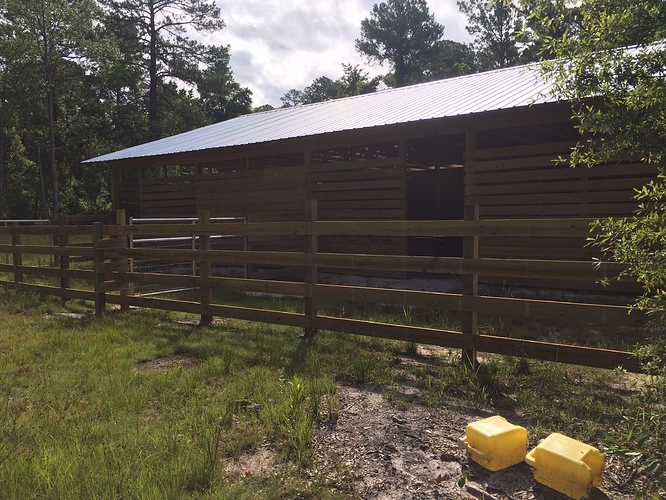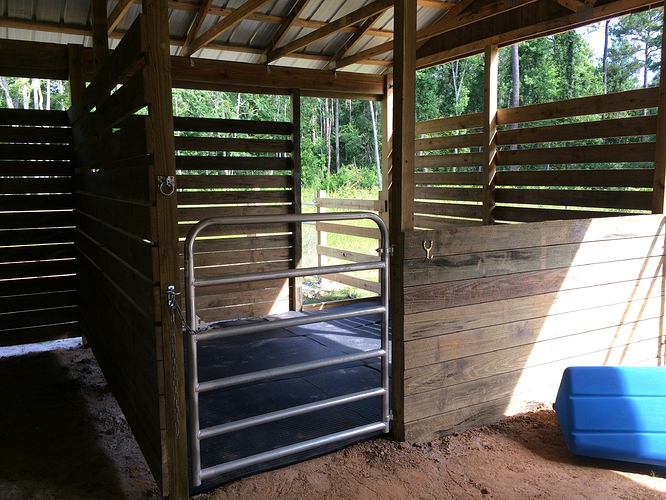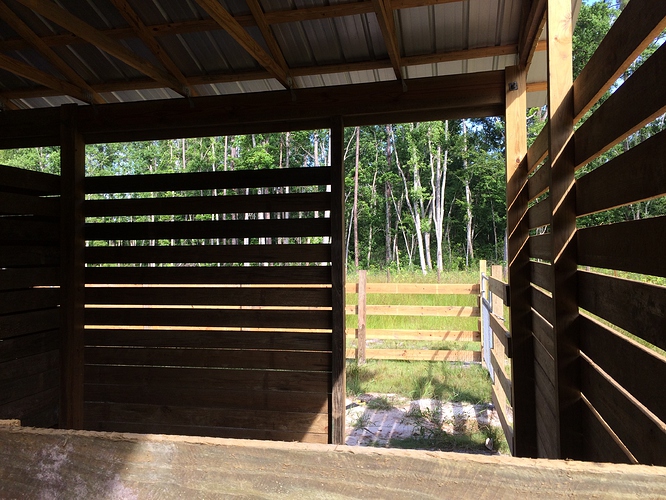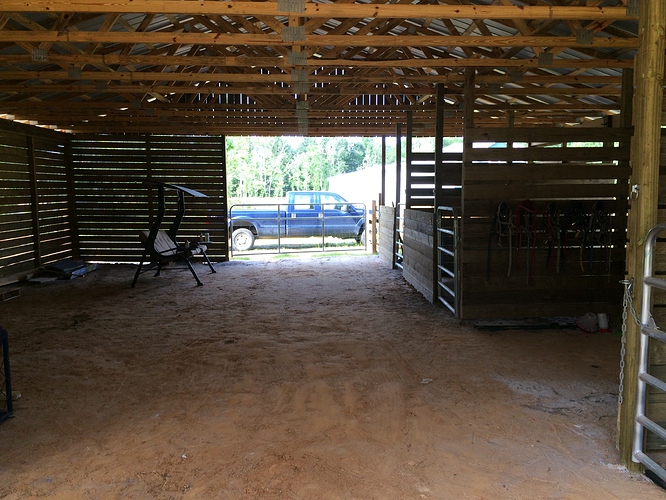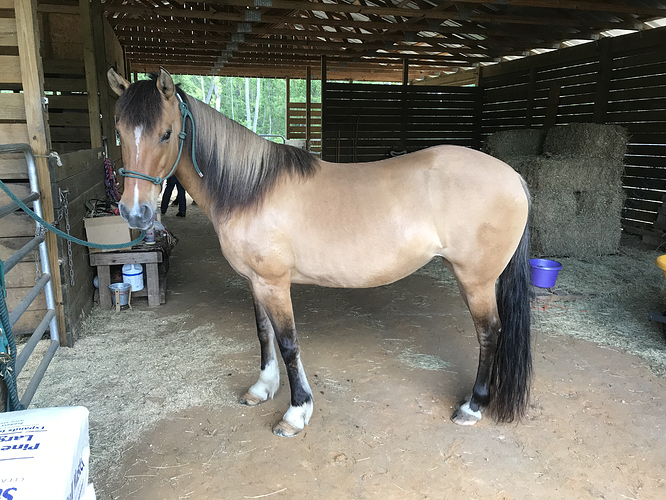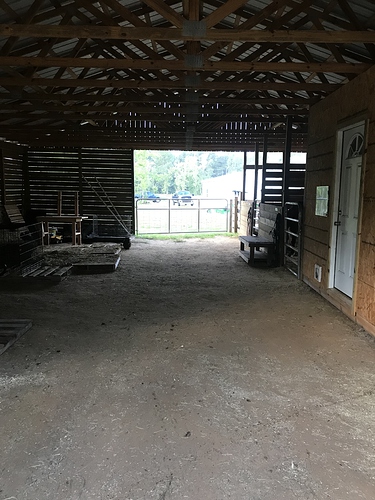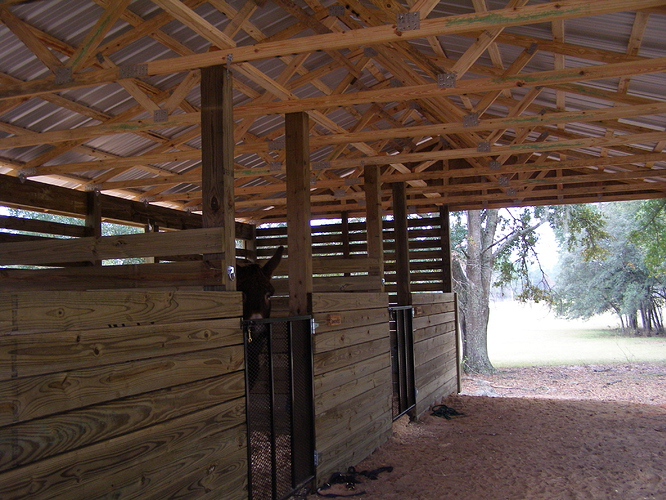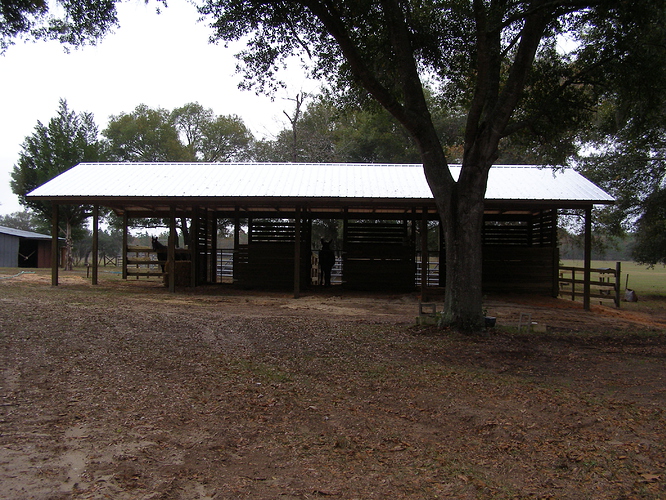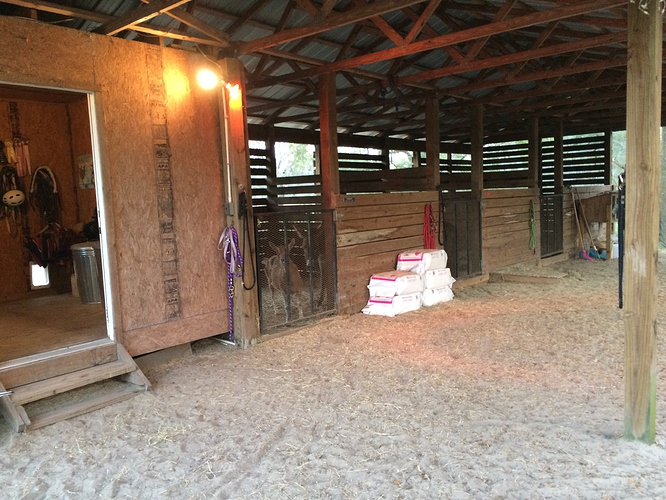We’ve had two properties here (a bit north of Ocala) and both times, we’ve asked locals to build us a Florida style barn. The concept is to maximize air flow by spacing the walls. In the coldest weather, the horses can still get in and stay dry (so you don’t have wet and cold). During the heat of summer, the horses have paddocks but will happily stand in their stalls on the hottest days, because the wall openings take advantage of every little breeze. We don’t even have fans installed. The farriers and vets LOVE the barns we’ve built because it gives them a shady, cool place to work. Also, and this will be counter-intuitive, but the aisle should be oriented north/south. The other way will trap heat and block the cooler breezes. The costs range between $15K and $20K.
Lightweight full barn. This is our current barn. The only regrets I have is not having the hay storage area better protected from damp breezes. It’s hard to keep hay in humid environments. It does better if I tuck it back away from the aisle. Or, build a separate hay shed, like we did at our old place. We built the paddocks ourselves. Also, very important, make sure you have the builder give you a good high clay pad to build your barn on. That clay is still in really good shape and all we had to do was put down stall mats.
Newly built:
After a few years. You can see the tack room we added and how we store the hay. Having a gate at both ends is to keep the barn cats safe and our dogs out of the barn while still allowing for air flow. The only thing I would change is to add more boards at the top of the walls on either end of the barn. We’ve been meaning to fix it because it does allow sideways rain to wet the shavings inside the stall (just on the edge, though).
If you want heavier boards and actual stall doors, here is the shed row I had built on our previous property. It ran us closer to 24K. The tack room in both was added later (we just had them build a stall initially). We built the paddocks. The no climb didn’t do nearly as well as the board fencing we used on the new full barn.
With the tack room and electricity added. I would recommend electricity, at least. A water spigot outside the barn is good, especially if you want auto waterers. Make sure you get the kind where you can clean the bowls. The water here gets a lot of algae.
Both of these barns saw us through several tropical storms and hurricanes. Yes, your stalls will get wet when he rain comes from all directions, but it blocks the rain from their backs and it’s warm water and hot temperatures during hurricane season, so no worries about cold, wet horses. We had very sandy soil on the first farm so the paddocks drained just fine. Our current farm has a lot of clay (and great pastures!) so we had to put rock down in the paddocks for drainage. Get a soil test done through UF and figure out how well your land drains. You want your barn on high ground (always) just like your house. You should build it far enough away from trees or assess the health of the trees next to your barn to be sure they aren’t at risk of dropping limbs. Shade is good. Let me know if you have any more questions.

 )
)

